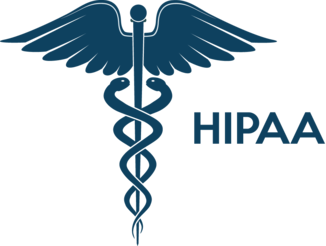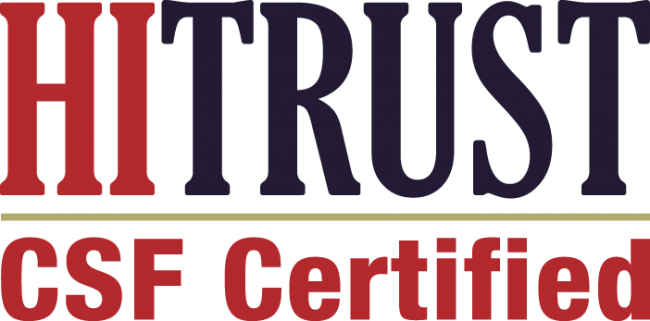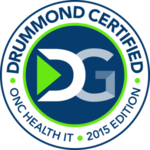The Evolution of Care Management
The Medicare landscape is undergoing a dramatic transformation as healthcare shifts toward value-based care models. At the heart of this evolution is Principal Care Management (PCM), a Medicare-reimbursed program that has emerged as a critical strategy for managing the growing burden of chronic disease in America. With six in ten U.S. adults living with at least one chronic condition and 27.2% experiencing multiple chronic conditions, the need for targeted, effective care coordination has never been more urgent.
As we look toward the future, PCM represents more than just a billing opportunity—it’s a fundamental shift in how healthcare organizations approach patient care, blending technology, human touch, and data-driven insights to improve outcomes while containing costs.
Understanding PCM: A Targeted Approach to Complex Care
Introduced by the Centers for Medicare & Medicaid Services (CMS) in 2020, Principal Care Management fills a critical gap in Medicare’s care coordination programs. Unlike Chronic Care Management (CCM), which focuses on patients with multiple chronic conditions, PCM specifically targets beneficiaries with a single, complex chronic condition that requires intensive management and puts them at significant risk of hospitalization, physical or cognitive decline, or death.
This focused approach addresses conditions like advanced heart failure, uncontrolled diabetes, severe COPD, or other high-risk chronic diseases that, when properly managed, can prevent costly hospitalizations and emergency department visits. Medicare Part B covers 80% of PCM services, making it accessible to millions of beneficiaries who need this level of intensive care coordination.
Current Market Dynamics and Growth Trajectory
The Chronic Disease Epidemic
The statistics paint a sobering picture of America’s health challenges:
- 60% of U.S. adults have at least one chronic condition
- 51.4% of adults (representing 130 million Americans) have multiple chronic conditions
- Chronic diseases account for 90% of the nation’s $4.5 trillion in annual healthcare spending
- 76.4% of U.S. adults reported one or more chronic conditions in 2023, including 59.5% of young adults (18-34), 78.4% of midlife adults (35-64), and 93% of older adults (65+)
Perhaps most concerning is the trend among younger adults. From 2013 to 2023, the prevalence of chronic conditions among young adults increased significantly from 52.5% to 59.5%, with multiple chronic conditions rising from 21.8% to 27.1%. This demographic shift signals that chronic disease management programs like PCM will remain critical for decades to come.
Medicare Advantage Momentum
The shift to Medicare Advantage (MA) plans is accelerating the adoption of care management programs:
- 54% of eligible Medicare beneficiaries are now enrolled in Medicare Advantage plans, representing over 32.8 million people in 2024
- Between 2023 and 2024, Medicare Advantage grew by 2.1 million enrollees, a 7% year-over-year growth rate
- The Congressional Budget Office projects that 64% of Medicare beneficiaries will be enrolled in MA plans by 2034
This trend is particularly important for PCM because Medicare Advantage plans operate under risk-based payment models that incentivize effective chronic disease management. These plans are actively seeking programs like PCM that demonstrate clear value and outcomes, as they help control the total cost of care while improving quality metrics.
Key Trends Shaping PCM’s Future
1. Enhanced Reimbursement and Regulatory Support
The 2025 Medicare Physician Fee Schedule has introduced several significant changes that enhance PCM’s financial viability:
Improved Payment Rates: Providers are seeing a rise in reimbursements for PCM codes, with 2025 national average rates including:
- CPT 99424 (30 minutes physician/QHP time): Approximately $77-84
- CPT 99425 (each additional 30 minutes): Approximately $65-70
- CPT 99426 (30 minutes clinical staff time): Approximately $63-68
- CPT 99427 (each additional 30 minutes clinical staff): Approximately $44-48
Expanded Access: Beginning January 2025, Rural Health Clinics (RHCs) and Federally Qualified Health Centers (FQHCs) can bill individual CPT codes for PCM at national non-facility rates, significantly expanding revenue opportunities for underserved communities.
Telehealth Flexibility: PCM services can be furnished via telehealth under current CMS waivers, providing operational flexibility and expanded patient reach capabilities.
2. The Rise of Advanced Primary Care Management (APCM)
Launched January 1, 2025, Advanced Primary Care Management (APCM) represents CMS’s vision for the future of care coordination. This new model differs fundamentally from existing programs:
Key Differentiators:
- Risk-stratified billing based on patient complexity rather than time-based requirements
- Universal eligibility: Can cover every Medicare patient receiving primary care, not just those with specific chronic conditions
- Three-tier system: Level 1 (patients with one or no chronic conditions), Level 2 (moderate risk), and Level 3 (high risk/Qualified Medicare Beneficiaries)
- Quality measurement integration: Requires participation in quality reporting, linked to the Value in Primary Care pathway
While PCM will continue as a distinct program, APCM provides an alternative pathway that may appeal to practices seeking to scale care management across their entire Medicare population without time-based documentation requirements.
3. Artificial Intelligence and Technology Integration
The integration of AI into care management is accelerating rapidly, with profound implications for PCM delivery:
Market Growth: The global artificial intelligence in remote patient monitoring market was valued at $1.99 billion in 2024 and is projected to reach $8.51 billion by 2030, growing at a CAGR of 27.98%.
Predictive Analytics: AI-driven predictive modeling using EHR data can now outperform traditional models in forecasting hospital readmissions, patient deterioration, and other critical outcomes. Organizations like Banner Health are using AI to predict risk for 42 health conditions across 100,000 members to lower preventable emergency department visits through primary care interventions.
Workflow Automation: AI-powered ambient clinical intelligence tools are cutting charting time by up to 74%, freeing clinicians to focus on patient care rather than documentation. This is particularly relevant for PCM, where comprehensive care planning and documentation are core requirements.
Enhanced Risk Stratification: Machine learning algorithms can analyze vast datasets to identify high-risk patients who would benefit most from PCM enrollment, improving targeting efficiency and outcomes.
4. Value-Based Care Alignment
Healthcare organizations implementing PCM programs position themselves advantageously for the continued shift to value-based payment models:
Financial Incentives: The cost-containment imperative for Medicare Advantage payers means a strong focus on ROI in product design has emerged as a priority. PCM programs that demonstrate effective delivery often negotiate better MA contracts and shared savings arrangements.
Population Health Management Market: The population health management industry is expected to reach $89 billion by 2025, driven by the movement away from fee-for-service to value-based payments.
Payer EBITDA Growth: Overall payer EBITDA is estimated at $52 billion in 2024, with projections to rise at a 7% CAGR from 2023 to 2028 to $78 billion, indicating robust healthcare financial performance that supports investment in care management infrastructure.
5. Data Quality and Interoperability
The foundation of effective PCM—and all future care management—relies on high-quality, interoperable data:
The Data Challenge: Despite massive investments in electronic health records, bad data continues to hinder healthcare progress. Organizations in 2025 are focusing intensively on systems to assess, clean, maintain, and organize data.
Integration Requirements: Successful AI-enabled PCM requires data from multiple sources—wearables, EHRs, patient-reported outcomes, and social determinants of health indicators—to function optimally.
Regulatory Considerations: Strict data protection regulations, particularly in Europe but increasingly in the U.S., present both challenges and opportunities for developing advanced care management algorithms.
Financial ROI: The Business Case for PCM
The financial prospects for PCM are compelling and continue to strengthen:
Revenue Potential
For a practice managing 500 PCM-eligible patients at the 2025 national average reimbursement rates, annual revenue potential ranges from $720,000 to $960,000. This assumes billing CPT 99426 (the most commonly used code for clinical staff time) at an average of $63-68 per patient per month.
Cost Savings
Beyond direct reimbursement, PCM generates substantial indirect financial benefits:
- Reduced hospitalizations: Comprehensive chronic care management programs can lead to a 25% reduction in hospitalization
- Lower ED utilization: Studies show a 35% reduction in emergency department visits
- Decreased mortality: Well-executed programs demonstrate a 45% decrease in mortality rates
- Net savings: CMS reported that care management services resulted in an estimated annual net saving of $74 per patient per month among Medicare beneficiaries
Technology-Enabled Efficiency
Platforms that streamline PCM delivery reduce operational costs through automation and workflow optimization. Technology-enabled PCM allows organizations to serve more patients with the same staffing levels, directly translating to increased revenue potential without proportional cost increases.
Predictions for the Next Five Years
Near-Term (2025-2027)
- Rapid APCM Adoption: Expect 30-40% of primary care practices to experiment with APCM as an alternative or complement to traditional CCM/PCM programs, particularly for their healthier patient populations.
- AI-Powered Risk Stratification Becomes Standard: Predictive analytics will shift from a competitive advantage to table stakes, with most health systems implementing some form of AI-driven patient risk scoring by late 2026.
- Hybrid Care Models Proliferate: The majority of PCM services will be delivered through a combination of in-person, telehealth, and asynchronous digital engagement, with patients receiving care through the modality that best suits their needs and preferences at any given time.
- Increased Regulatory Scrutiny: As PCM volume grows, expect heightened CMS attention to documentation quality, medical necessity, and outcome reporting. Programs that cannot demonstrate tangible clinical value may face reimbursement challenges.
Medium-Term (2027-2030)
- Integration with Social Determinants: PCM programs will increasingly incorporate social determinants of health screening and intervention, with dedicated resources for addressing food insecurity, housing instability, and transportation barriers that impede chronic disease management.
- Wearables Become Central to PCM: Nearly one in four Americans already own a wearable device that tracks health metrics, with the market expected to exceed $52 billion. By 2028, integration of continuous monitoring data into PCM workflows will be commonplace, enabling earlier intervention and more personalized care planning.
- Specialized PCM Programs Emerge: Rather than generic chronic disease management, expect to see condition-specific PCM programs optimized for diabetes, heart failure, COPD, and other prevalent conditions, with specialized care teams and protocols tailored to each disease state.
- Payment Model Evolution: CMS may introduce outcome-based payment adjustments for PCM, rewarding programs that demonstrate superior clinical results with bonus payments while potentially reducing reimbursement for programs with poor outcomes.
- Consolidation of Care Management Vendors: The market for care management technology and services will consolidate, with larger platforms acquiring smaller specialized tools to offer comprehensive solutions.
- Workforce Transformation: The role of care coordinators will evolve from primarily administrative to more clinical, with expanded scopes of practice enabled by technology. Expect to see new credentialing programs specifically for PCM care managers.
Challenges and Barriers to Overcome
Despite its promise, PCM faces several obstacles that will shape its evolution:
Patient Engagement
Approximately 38% of primary care practices identify patient engagement as a barrier to successful care management implementation. Overcoming this requires:
- Culturally competent communication strategies
- Simplified enrollment processes
- Clear demonstration of program value to patients
- Flexible engagement options that meet patients where they are
Technology Implementation
While AI and digital health tools offer tremendous potential, implementation challenges include:
- Integration complexity with existing EHR systems
- High upfront costs for smaller practices
- Staff training requirements
- Algorithm bias and fairness concerns
Regulatory Complexity
The evolving regulatory landscape creates uncertainty:
- Annual changes to Medicare Physician Fee Schedule
- Quality reporting requirements
- Documentation standards that vary by payer
- Potential for increased audit activity
Staffing Constraints
The nursing shortage and broader healthcare workforce crisis strain PCM programs:
- Difficulty recruiting qualified care coordinators
- Burnout among existing staff
- Competition for talent with other healthcare organizations
- Need for specialized training in chronic disease management
Strategic Recommendations for Healthcare Organizations
For Health Systems and Medical Groups
- Assess Your Starting Point: Conduct a comprehensive analysis of your current PCM/CCM programs, including enrollment rates, billing patterns, clinical outcomes, and financial performance.
- Invest in Technology Infrastructure: Prioritize platforms that offer automated patient identification, workflow management, communication tools, and robust reporting capabilities.
- Develop Specialized Care Teams: Create dedicated teams with expertise in specific chronic conditions rather than expecting generalists to manage all disease states equally well.
- Pilot APCM Strategically: Test APCM with selected patient populations while maintaining existing PCM/CCM programs, carefully tracking comparative outcomes and financial performance.
- Focus on High-Risk Populations First: Target PCM enrollment toward patients with recent hospitalizations, high ED utilization, or complex medication regimens who are most likely to benefit.
For Individual Practices
- Partner Rather Than Build: Consider engaging with care management service providers or technology vendors rather than building programs from scratch, particularly if you’re a smaller practice.
- Start Small and Scale: Begin with a pilot of 50-100 patients, refine your processes, then expand based on lessons learned.
- Emphasize Care Coordination: Focus on the clinical value of PCM—medication reconciliation, care plan optimization, patient education—rather than viewing it primarily as a revenue opportunity.
- Leverage Existing Staff: Train current medical assistants or nurses to take on care coordination responsibilities rather than immediately hiring new positions.
- Document Meticulously: Maintain comprehensive records of all PCM activities, including time spent, interventions provided, and patient responses, to withstand potential audits.
For Technology Vendors
- Prioritize Interoperability: Build solutions that seamlessly integrate with major EHR platforms and can aggregate data from multiple sources.
- Focus on Workflow Efficiency: Design tools that reduce administrative burden rather than adding to it, with particular attention to documentation automation.
- Demonstrate Clinical Value: Provide robust analytics that help organizations track not just billing metrics but clinical outcomes and patient satisfaction.
- Support Regulatory Compliance: Build in automated compliance checks and documentation templates that evolve with changing CMS requirements.
The Role of Patients in PCM’s Future
Ultimately, PCM’s success depends on patient engagement and empowerment:
Shared Decision-Making
Future PCM programs will increasingly emphasize patients as partners in their care, with collaborative goal-setting and treatment planning.
Patient-Generated Health Data
The proliferation of smartphones, wearables, and home monitoring devices enables patients to contribute real-time data to their care teams, fostering more responsive and personalized management.
Health Literacy Initiatives
Organizations must invest in helping patients understand their conditions, medications, and self-management strategies through accessible education materials and coaching.
Cultural Competence
With over 30% of Medicare Advantage beneficiaries identifying as Black, Latino, or Asian, PCM programs must be designed with cultural sensitivity and delivered in patients’ preferred languages.
Conclusion: A Transformative Moment
Principal Care Management stands at the intersection of several powerful healthcare trends: the shift to value-based care, the aging of America’s population, the maturation of digital health technologies, and the growing recognition that chronic disease requires proactive, coordinated management rather than reactive, episodic treatment.
The statistics are clear: approximately 75% of healthcare organizations in the United States have adopted some form of chronic care management services, with adoption growing at 15% annually. Medicare Advantage enrollment has crossed the 50% threshold and continues climbing. Artificial intelligence in healthcare is moving from experimental to operational. The infrastructure for a transformed approach to chronic disease management is rapidly falling into place.
For forward-thinking healthcare organizations, the question is not whether to invest in PCM, but how to do so strategically to maximize both clinical outcomes and financial sustainability. Those that succeed will be practices and health systems that:
- Embrace technology while keeping the patient-provider relationship central
- Use data intelligently to identify and engage high-risk patients
- Build specialized teams with deep expertise in chronic disease management
- Remain flexible as payment models and regulations evolve
- Measure and continuously improve both clinical and operational performance
The future of Medicare care management through PCM is not predetermined—it will be shaped by the choices providers, payers, technology companies, regulators, and patients make over the coming years. But the direction is clear: toward more proactive, personalized, data-driven, and ultimately more effective management of the chronic conditions that affect the majority of American adults.
The organizations that position themselves at the forefront of this transformation today will be the ones delivering superior care at lower costs tomorrow—fulfilling healthcare’s quadruple aim of better outcomes, better experiences, lower costs, and improved clinician well-being. In the rapidly evolving landscape of American healthcare, PCM represents not just an opportunity but an imperative for those committed to building a more sustainable, equitable, and effective healthcare system.








